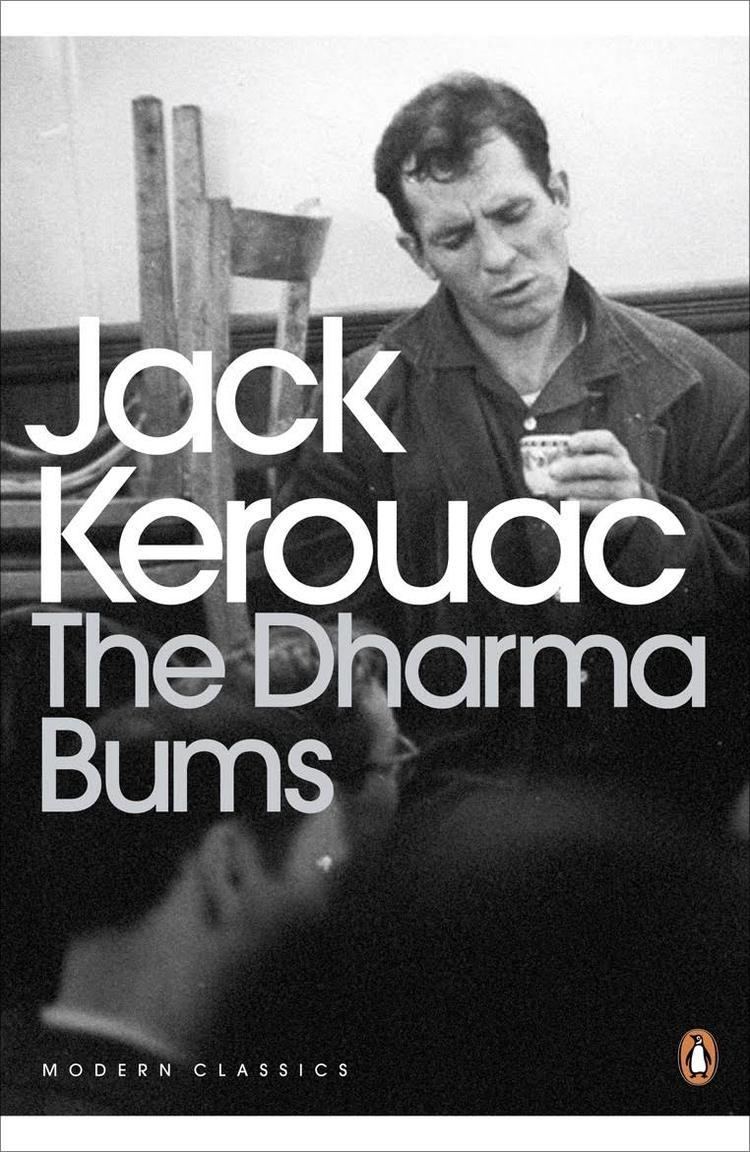7.8 /10 1 Votes7.8
Language English OCLC 23051682 LC Class PS3521.E735 D48 1990 | 3.9/5 Goodreads Pages 187 pp Dewey Decimal 813/.54 20 Originally published 1958 Country United States of America | |||||||||||||||||||||||||||||||||
 | ||||||||||||||||||||||||||||||||||
Characters Japhy Ryder, Alvah Goldbook, Warren Coughlin Similar Jack Kerouac books, Beat Generation books, Novels | ||||||||||||||||||||||||||||||||||
The Dharma Bums is a 1958 novel by Beat Generation author Jack Kerouac. The basis for the novel's semi-fictional accounts are events occurring years after the events of On the Road. The main characters are the narrator Ray Smith, based on Kerouac, and Japhy Ryder, based on the poet and essayist Gary Snyder, who was instrumental in Kerouac's introduction to Buddhism in the mid-1950s. The book concerns duality in Kerouac's life and ideals, examining the relationship of the outdoors, mountaineering, hiking, and hitchhiking through the West with his "city life" of jazz clubs, poetry readings, and drunken parties. The protagonist's search for a "Buddhist" context to his experiences (and those of others he encounters) recurrs throughout the story. The book had a significant influence on the Hippie counterculture of the 1960s.
Contents
Plot summary
The character Japhy drives Ray Smith's story, whose penchant for simplicity and Zen Buddhism influenced Kerouac on the eve of the sudden and unpredicted success of On the Road. The action shifts between the events of Smith and Ryder's "city life," such as three-day parties and enactments of the Buddhist "Yab-Yum" rituals, to the sublime and peaceful imagery where Kerouac seeks a type of transcendence. The novel concludes with a change in narrative style, with Kerouac working alone as a fire lookout on Desolation Peak (adjacent to Hozomeen Mountain), in what would soon be declared North Cascades National Park (see also Desolation Angels). These elements place The Dharma Bums at a critical junction foreshadowing the consciousness-probing works of several authors in the 1960s such as Timothy Leary and Ken Kesey.
One episode in the book features Smith, Ryder, and Henry Morley (based on real-life friend John Montgomery) climbing Matterhorn Peak in California. It relates Kerouac's introduction to this type of mountaineering and inspired him to spend the following summer as a fire lookout for the United States Forest Service on Desolation Peak in Washington.
The novel also gives an account of the legendary 1955 Six Gallery reading, where Allen Ginsberg gave a debut presentation of his poem "Howl" (changed to "Wail" in the book). At the event, other authors including Snyder, Kenneth Rexroth, Michael McClure, and Philip Whalen also performed.
Character Key
Kerouac often based his fictional characters on friends and family.
"Because of the objections of my early publishers I was not allowed to use the same personae names in each work."
Reception
As John Suiter stated in a review: "Don't read Kerouac when you're too young. Read him as you join that long death march called steady employment. Then look back. Look back to all the people you knew, those people who went here and there, those people who knew odd patches of philosophy and poetry. They fucked. They doped and boozed in desperate self medication. Look back at yourself. Jack travels here and there. He knows people with Odd Knowledge. They have plumbed the breadth and depth of human existence. They get laid in the era before The Pill. They doped and boozed. They had the Knowledge. Read Kerouac and look back. And then it occurs to you. It's all been done before. None of your old pals will ever be quite what he once was in your memory. And you'll know Kerouac for what he was. And you know that amidst all the lies, he told the truth. The truth with a little 't'. He wanted to fool you, but he couldn't. It wasn't in him; he hadn't the talent for it. He had only enough to tell you the way he had wanted it to be. How he wanted it to be when he looked back on it."
Gary Snyder wrote Kerouac saying "Dharma Bums is a beautiful book, & I am amazed & touched that you should say so many nice things about me because that period was for me really a great process of learning from you..." but confided to Philip Whalen, "I do wish Jack had taken more trouble to smooth out dialogues, etc. Transitions are rather abrupt sometimes." Later, Snyder chided Kerouac for the book's misogynistic interpretation of Buddhism.
